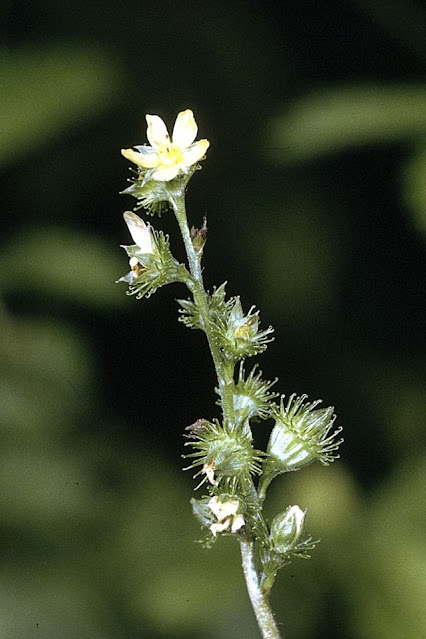Heuchera cylindrica, also known as coral bells is a herbaceous perennial that is native to Western North America. Several western Native American communities found interesting medicinal uses for this pretty flowering plant.
About Coral Bells
Heuchera cylindrical, in the Saxifragaceae family, is native to rocky woods, cliffs, ledges, slips, and subalpine meadows from British Columbia and Alberta Canada south to Northern California, Nevada, Wyoming, and Colorado. It is a hardy, clump-forming perennial from short thick rhizomes and basal leaves. The flowers grow in a spike on an erect leafless stem that can reach up to 35 inches in height. The dark green leathery leaves are oval and are often lobed or toothed and sometimes broad and heart-shaped and grow around the base of the stem. The upper plant is covered with glandular hairs, especially in the narrow flower cluster. The flowers have very short petals that help to distinguish this species from several others growing in the area. The flowers are bell-shaped and can be pale yellow, creme, green or pink. The plant blooms in late spring and early summer.
Medicinal Uses
The Cheyenne made a poultice of the powdered roots and used it to treat poison ivy and other skin rashes. They also made an infusion of the roots and rubbed the infusion on the skin to treat sore muscles. The Arapaho used this plant for a variety of unspecified ailments. The Blackfoot pounded the roots and used the paste to treat sores. They also used an infusion of the root as an eyewash. The Blackfoot also used a poultice of mashed raw roots to treat snakebites in humans and in horses. As this is in the Alumroot family, the Blackfoot also added the root to dye baths to help to set the color in their dress.
Did You Know
Heuchera cylindrical is also called poker heuchera in reference to its poker-like spikes of creamy flowers. It is also called round leaf alumroot in reference to its rounded leaves.
Bees love the creamy flowers.
Alum is the main ingredient in many mordants, a chemical metallic salt that helps solidify the relationship between pigment and fiber.














